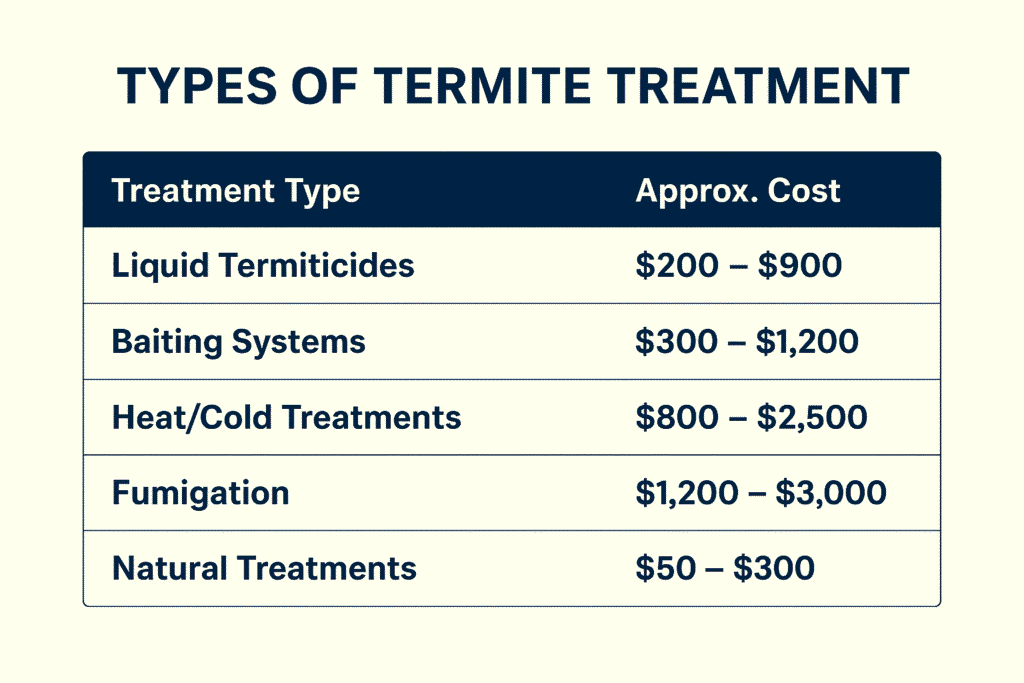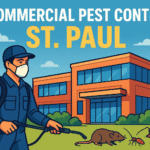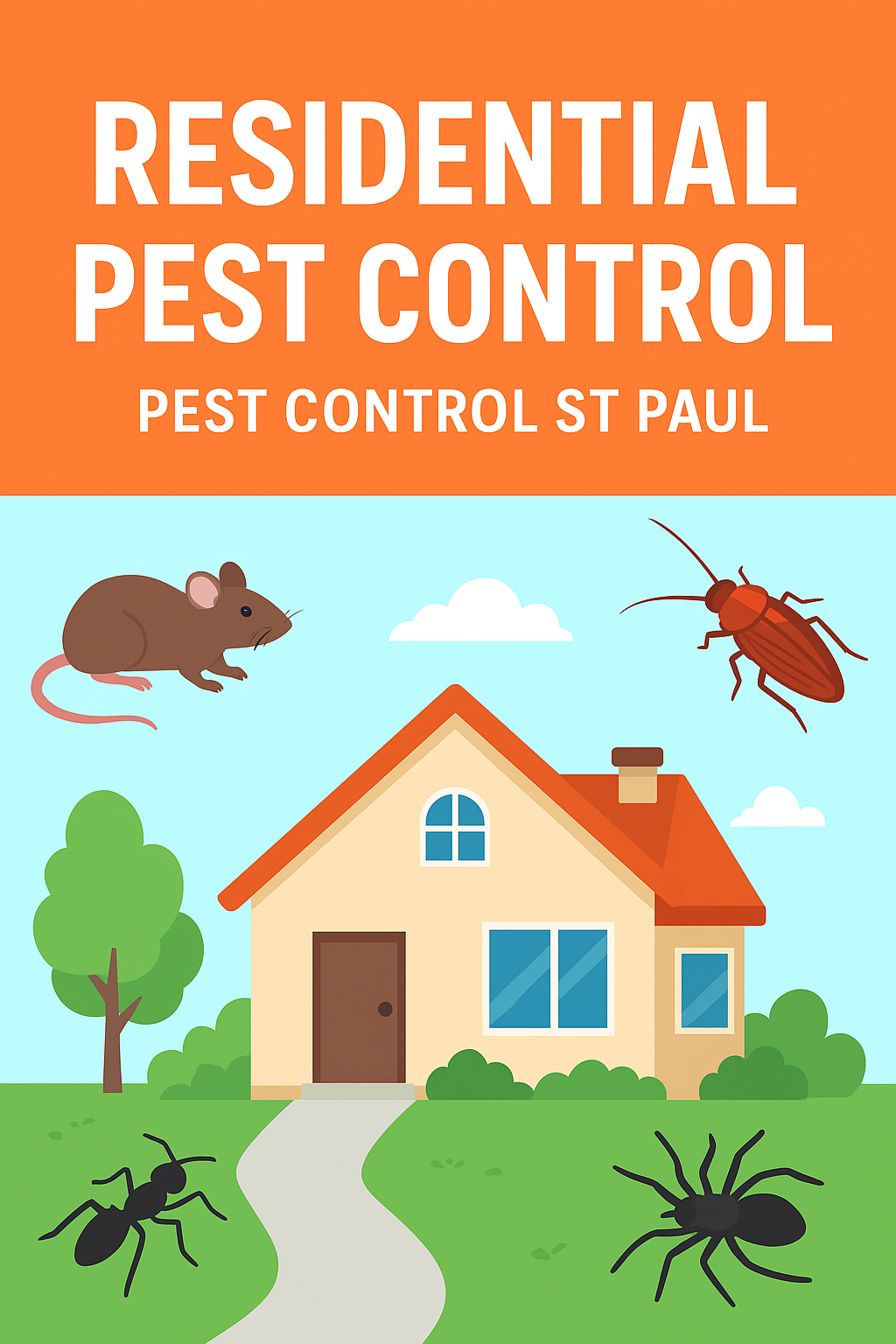Termites are small but destructive pests that can silently damage your home’s structure before you even realize there’s a problem. Knowing the types of termite treatment available is essential if you want to stop these “silent destroyers” in their tracks. From chemical treatments to eco-friendly solutions, the right approach depends on the severity of your infestation, your budget, and your long-term goals.
If you live in or around St. Paul, choosing the right treatment method is even more critical, as termites are common in Minnesota’s humid climate. While the cost of pest control can vary based on the size of your property and the severity of the infestation, investing in the right treatment today can save you thousands in future repairs.
1. Understanding Termites and Why Treatment Matters
Termites, often called “silent destroyers,” can compromise your home’s structure without showing obvious signs until it’s too late. They feed on cellulose-rich materials like wood, drywall, and paper, making your house a prime target.
If left untreated, they can cause thousands of dollars in damage. That’s why knowing the types of termite treatment and acting quickly is critical.
2. Signs You May Have a Termite Infestation
Before deciding on the right treatment, you need to identify whether you have a problem. Watch for:
-
Mud tubes around walls or foundations
-
Discarded wings near windows or doors
-
Hollow-sounding wood when tapped
-
Small holes or frass (termite droppings)
-
Sagging floors or ceilings
3. Different Types of Termite Treatment
Termite treatments fall into four main categories:
-
Chemical Treatments – Effective and fast
-
Physical Barriers – Preventive measures to block entry
-
Natural and Eco-Friendly Solutions – Safe for homes with kids and pets
-
Alternative Approaches – Heat, cold, and fumigation
Let’s explore each method in detail.
4. Chemical Treatments
Chemical treatments remain the most widely used and effective solution for termite infestations.
4.1 Liquid Termiticides
These create a protective barrier around your home. When termites come into contact with the treated soil, they die or carry the poison back to their colony, eliminating it entirely.
Pros:
-
Fast-acting
-
Long-lasting protection
-
Ideal for subterranean termites
Cons:
-
Requires professional application
-
Some chemicals can be hazardous if misused
4.2 Termite Baiting Systems
Bait stations with slow-acting poison are placed strategically around your property. Termites feed on the bait and carry it back to their nest, gradually wiping out the colony.
Pros:
-
Eco-friendlier than spraying chemicals
-
Targets the source of the problem
Cons:
-
Slower than liquid termiticides
-
Requires frequent monitoring
5. Physical Barriers and Preventive Methods
Physical termite barriers are installed before or during construction to prevent termites from accessing your home’s structure.
5.1 Stainless Steel Mesh Barriers
Durable steel mesh placed beneath foundations blocks termites effectively.
5.2 Sand Barriers
Termites can’t tunnel through coarse sand, making this a natural deterrent.
5.3 Sealing Cracks and Entry Points
Regularly inspect and seal gaps around your home to reduce entry opportunities.
6. Natural & Eco-Friendly Treatments
Homeowners seeking safer alternatives can opt for eco-friendly termite treatments:
6.1 Orange Oil Treatment
Extracted from orange peels, d-limonene kills termites on contact but is safe for people and pets.
6.2 Beneficial Nematodes
These microscopic worms prey on termites naturally, helping control infestations.
6.3 Vinegar and Lemon Solutions
A DIY-friendly spray that repels termites from localized areas.
7. Heat and Cold Treatments
Using extreme temperatures is another way to kill termites without chemicals:
-
Heat Treatment: Raising the temperature of infested areas to 120–140°F kills termites within hours.
-
Cold Treatment: Liquid nitrogen freezes termites instantly, best for furniture or small areas.
8. Fumigation and Tenting Method
For severe infestations, fumigation is one of the most effective solutions. The home is tented and filled with a gas that penetrates deep into the walls, killing termites everywhere.
Pros:
-
Ideal for drywood termites
-
Reaches hidden colonies
Cons:
-
Requires you to vacate your home for several days
-
Doesn’t prevent future infestations
9. DIY Termite Treatments vs. Professional Services
-
DIY treatments are budget-friendly and work for small infestations but may not eliminate hidden colonies.
-
Professional pest control ensures thorough inspection, advanced treatments, and long-term protection.
If you’re in St. Paul, professional services like Pest Control St. Paul offer tailored solutions based on local termite species and conditions.
10. How to Choose the Right Termite Treatment
Consider:
-
Severity of infestation
-
Budget and cost preferences
-
Eco-friendly vs. chemical-based methods
-
Long-term prevention vs. quick fixes
11. Cost Comparison of Different Treatments
| Treatment Type | Approx. Cost | Effectiveness |
|---|---|---|
| Liquid Termiticides | $200 – $900 | High |
| Baiting Systems | $300 – $1,200 | High |
| Heat/Cold Treatments | $800 – $2,500 | Medium |
| Fumigation | $1,200 – $3,000 | Very High |
| Natural Treatments | $50 – $300 | Low to Medium |

For a detailed breakdown of pest control pricing, check our cost of pest control guide.
12. How to Prevent Future Termite Infestations
-
Store firewood away from the house
-
Fix leaks and reduce moisture around the foundation
-
Keep gutters clean and well-drained
-
Schedule annual termite inspections
13. Common Mistakes to Avoid During Termite Treatment
-
Ignoring early warning signs
-
Relying solely on DIY solutions for severe infestations
-
Failing to follow up with inspections
-
Skipping preventive measures after treatment
14. When to Call a Professional
If termites have already caused noticeable damage or you spot multiple warning signs, hiring a professional is the safest, most effective option.
15. Conclusion and Final Thoughts
Termites might be small, but their damage is anything but. Understanding the different types of termite treatment empowers you to protect your home, save money, and prevent recurring infestations.
From chemical barriers to eco-friendly solutions, there’s a treatment for every situation and budget. Early detection, professional help, and preventive measures are your strongest weapons against these silent invaders.
FAQs
1. What are the most effective types of termite treatment?
The most effective types of termite treatment are liquid termiticides and baiting systems. Liquid treatments create a protective barrier around your home, while bait stations eliminate the colony gradually.
2. Is professional pest control necessary for termites?
Yes, professional pest control is highly recommended for termite infestations, especially severe ones. Experts can locate hidden colonies and use advanced treatments to eliminate them completely.
3. Are eco-friendly termite treatments safe and effective?
Eco-friendly termite treatments, like orange oil, beneficial nematodes, and vinegar sprays, work well for small infestations. However, for larger colonies, combining them with professional treatments is more effective.
4. How much does termite treatment cost in St. Paul?
Depending on the method, the cost of termite treatment can range from $1,000 to $3,500.
5. How often should termite inspections be done?
It’s recommended to schedule annual termite inspections. Regular checks help detect early infestations and prevent costly structural damage.







